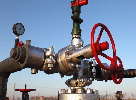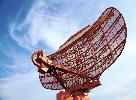|
Industrial IoT
Industrial IoT (IIoT) is a system of connected devices, sensors, and applications that monitor and analyze data from industrial operations. IIoT can help improve efficiency, productivity, and safety, and can also help reduce costs.
IIoT can be used in a number of ways
- Predictive maintenance: IIoT can help predict when maintenance is needed by monitoring sensors and analyzing data
- Energy consumption: Smart meters can measure and monitor energy consumption in real time
- Quality analytics: IIoT can help optimize factory output quality by extracting insights from data sources like manufacturing equipment and environmental conditions
- Real-time location tracking: IIoT can provide real-time location tracking for vehicle fleets, trains, buses, etc
Some examples of IIoT devices include:
- Temperature, Pressure, Humidity and Vibration sensors
GPS trackers and Proximity sensors
- Air quality and Water quality sensors
- Noise level monitors
Obviously, many other types of sensors are possible.
The primary use of IIoT is either providing sensor data or by interfacing with existing Industrial Control Systems (ICS). Typically this is going to be via local interfaces on the IIoT device:
- Dry contacts often via GPIO
- Legacy serial e.g., RS232, RS422 or RS485
- Ethernet
When interfacing with a local RTU or PLC, traditional protocols such Modbus over TCP and Serial are often implemented.
IIoT devices can connect over a number of methods, but the most common are traditional Ethernet and Wireless, e.g. LTE & CBRS. Bluetooth is sometimes used for short range connectively s and big data to create a more comprehensive manufacturing environment.
|






